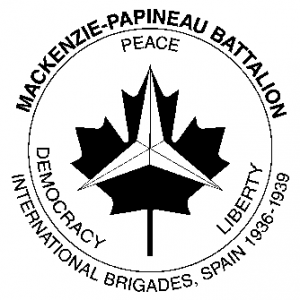The Centenary of Pablo de la Torriente Brau
By Moe Fishman, Bridagista / Abraham Lincoln
Pablo de la Torriente Brau was a Cuban volunteer who died in the Spanish Civil War.
He was born in 1901. As a student in Havana University he participated in the struggle to remove the dictator, Antonio Machado. He went to jail twice for his militancy in leading the student movement in the struggle.
As a journalist, he continued to be a leader against Grau St. Martin, Machado’s successor. The pressure against him was such that he was advised to go into exile in New York City in 1935. There, he joined many other anti-imperialist revolutionaries in the Jose Mella Club. He continued to write for many newspapers and magazines in the U.S. and Latin America.
The fascist uprising against the legally elected government of Spain erupted on July 18, 1936. Pablo traveled to Spain as a journalist on behalf of The New Masses and a Mexican magazine. He arrived in Spain in September 1936. Assessing the situation, he decided it was more important to participate in the fight to beat back the fascists than to write about it. He joined one of the battalions in the regiment led by El Campasino, as a political commissar, and was killed at Majadahonda in Catalonia. He was buried at the cemetery at Montjuich in Barcelona in December 1936.
In his short career, he was published in various newspapers and magazines. He was part of the avant-garde of journalists writing in a crisp new style typified by Hemingway. But the content was revolutionary and often prescient, projecting the revolutionary developments that were in the offing. Two of his books were published in his lifetime.
His revolutionary actions and writings were well known to the movement of revolutionaries surrounding Fidel Castro.
In 1997 the government of Cuba allotted sufficient funds to establish the Cultural Center Pablo de la Torriente Brau. Under the direction of Victor Casaus, it has made outstanding contributions to the cultural life of Cuba. Among its many assignments were collecting and housing the archives of Pablo de la Torriente Brau and the archives of the Cuban participation in the International Brigades.
Some months ago it was decided to honor Pablo on his centenary. Under the capable leadership of Mr. Casaus, historians and writers in many disciplines were enrolled to present papers on the many and varied aspects of Pablo’s life. These were to be presented in lectures delivered at the center on four days in December. To give some idea of the range of subjects covered, a few of the topics are listed below:
- Pablo and his epoch
- Pablo as a student at the University of Havana
- Pablo and his published books
- Pablo as a journalist
- Pablo and his battles with his editors
- Marti and Pablo: anti-imperialism and revolution
- His exile in New York City
- Pablo and the Spanish Civil War
The government issued a new postage stamp with his picture in his honor.
The Puffin Gallery in New York City was approached for a loan of a photo exhibit on the Spanish Civil War with photos taken by anonymous photographers from Holland, augmented by photos from the private collection of Sam Walters, a U.S. veteran of the Lincoln Battalion. Sam Walters died in Cuba a few years ago seeking medical aid for a rare ailment. Carl Rosenstein, curator of the Puffin Gallery, agreed and sent the exhibit.
When Carl could not attend as a docent for the exhibit, he asked me to substitute for him at the Puffin Foundation’s expense. When an invitation came to VALB to be represented at the Centenary, it was an offer I couldn’t refuse.
The opening day ceremony of the six day Centenary took place on Monday, Dec. 17. We approached the building through the narrow winding streets of old Havana. The three-story building does not prepare you for the large entrance gallery with a magnificent display of the photo exhibit sent by the Puffin Gallery. Enlarged photos, excellently mounted, hold one’s interest and attention. The captions (in Spanish, of course) leave little for the regular docent to explain. Only on specific questions about the Spanish Civil War was I of some use there.
In back, one enters the spacious courtyard. It is embedded gray slate held together by bright white cement; the raised dais is similarly coated.
Mr. Casaus opened the proceedings. He introduced Mr. Eusebio Leal, Historian of the City of Havana, who is in charge of restoring cultural institutions in old Havana. He spoke movingly of the contributions of the Center and honored Pablo. He was followed by the Vice-Premier of Cuba, Mr. Jose Ramon Fernandez, who represented the government and officially initiated the Pablo de la Torriente postage stamp. He honored the Abraham Lincoln Brigade and made a presentation of a plaque and the first Pablo de la Torriente Brau Certificate of Merit. I accepted on behalf of the 2,800 U.S. veterans who had volunteered to serve in Spain.
Four new books about Pablo were published in conjunction with the centenary; a set was presented to us for our archives.
Four days of well-attended lectures followed with the delivery of the many papers mentioned above. There was much discussion, particularly on the final series that concentrated on the Spanish Civil War and included not only Pablo’s contribution but also that of the 900 Cuban volunteers. I participated in a lively colloquium on the International Brigades with Cuban volunteers. It generated great interest and many questions, particularly from the majority in attendance that were not even born at that time.
It was truly an outstanding event and I regret that more of our comrades could not have enjoyed this experience of being so honored.

